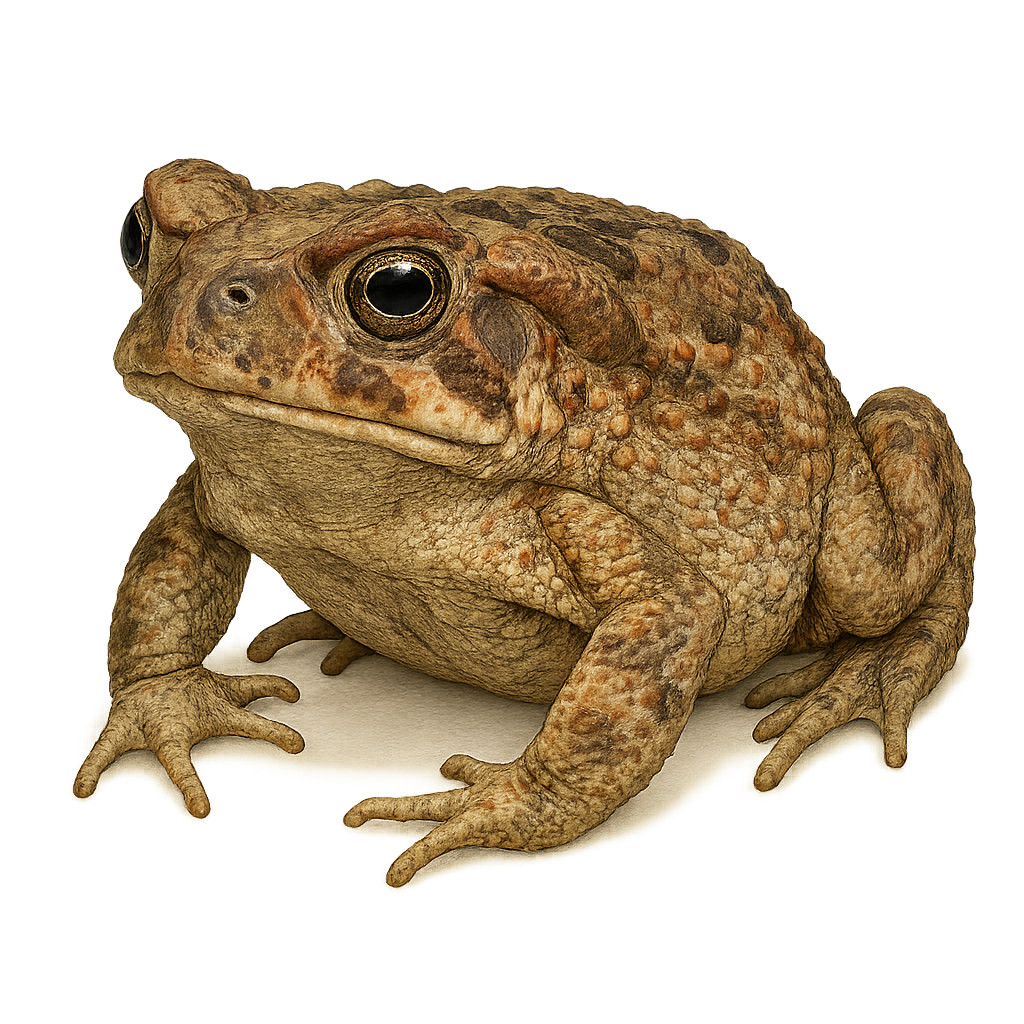Your wildlife photography guide.
Explore the cane toad in detail, study its behavior, prepare your shots.
Where to observe and photograph the cane toad in the wild
Learn where and when to spot the cane toad in the wild, how to identify the species based on distinctive features, and what natural environments it inhabits. The WildlifePhotographer app offers tailored photography tips that reflect the cane toad’s behavior, helping you capture better wildlife images. Explore the full species profile for key information including description, habitat, active periods, and approach techniques.
Cane toad
Scientific name: Rhinella marina

IUCN Status: Least Concern
Family: BUFONIDAE
Group: Amphibians
Sensitivity to human approach: Suspicious
Minimum approach distance: 2 m
Reproduction period: February to March
Incubation: 2–5 jours
Births: February to March
Habitat:
marshes, rice fields, slow-flowing streams and roadside ditches
Activity period :
Mainly active at night, generally discreet during the day.
Identification and description:
The cane toad (Rhinella marina) is a robust amphibian reaching up to 23 cm in total length, with a stocky body covered in rough, warty skin colored olive to deep brown. Native to tropical wetlands of Central and South America, it inhabits marshes, rice fields, slow-flowing streams and roadside ditches, preying on insects, spiders and small vertebrates. An invasive species introduced across multiple continents, it secretes potent skin toxins to deter predators. Males vocalize in resonant choruses during the rainy season. Breeding occurs in large communal pools, where females deposit thousands of eggs in gelatinous strings that hatch in two to five days. After hatching, tadpoles metamorphose rapidly and juveniles may live over ten years.
Recommended lens:
Macro – adjust based on distance, desired framing (portrait or habitat), and approach conditions.
Photography tips:
Use a 100–150 mm macro lens and position yourself at ground level for a natural perspective. Set aperture to f/11 to isolate the toad and shutter speed to 1/200 s to freeze subtle movements. Employ an off-camera flash with diffuser or a reflector for soft lighting without harsh reflections, and shoot in RAW to maximize post-processing flexibility. Scout ephemeral ponds after rainfall, when cane toads are most active.
The WildlifePhotographer App is coming soon!
Be the first to explore the best nature spots, track rutting seasons, log your observations, and observe more wildlife.
Already 1 430 wildlife lovers subscribed worldwide

